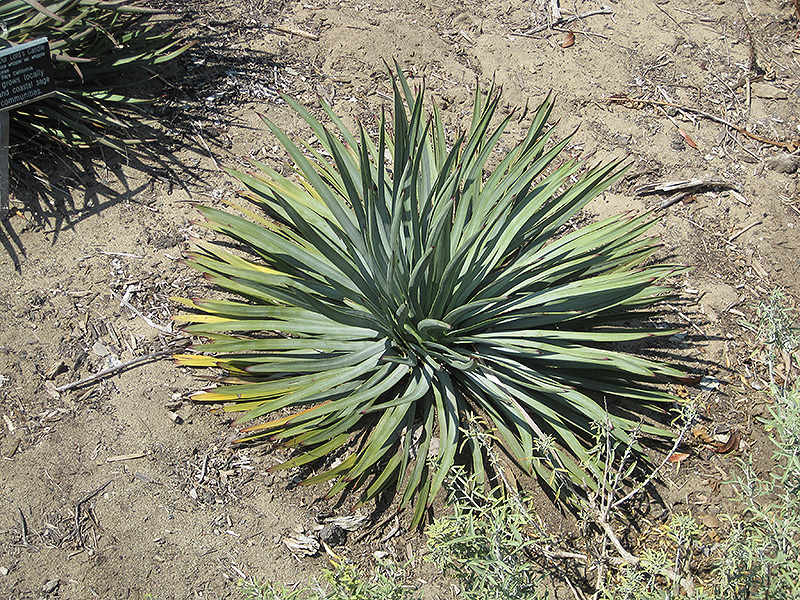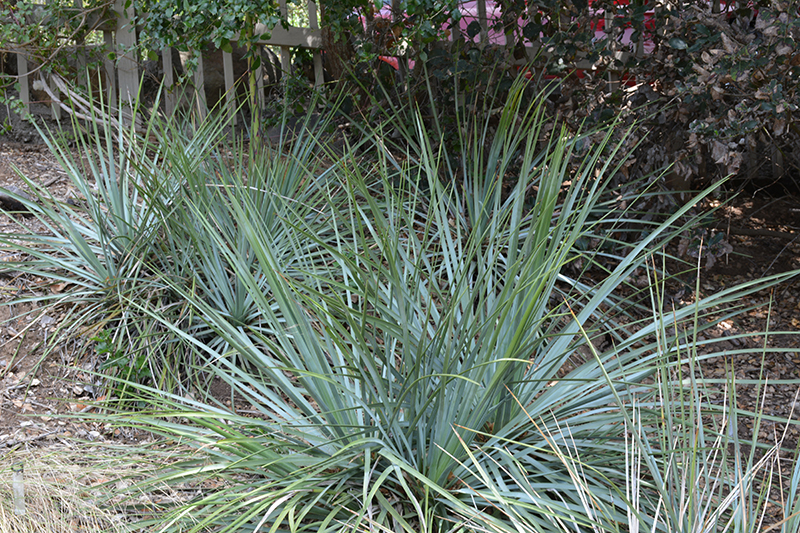Plant Height: 3 feet Flower Height: 8 feet Spread: 3 feet
Sunlight:
Hardiness Zone: 8a Other Names: Spanish Bayonet, Our Lord's Candle, Yucca whipplei Description: A bold accent plant, this selection forms a compact rosette of rigid, sea green leaves that end in a sharp point; a single tall flower spike appears bearing hundreds of blooms at maturity,after which, the parent plant dies; excellent for dry sites Ornamental Features Chaparral Yucca features bold spikes of creamy white bell-shaped flowers rising above the foliage in mid summer. It has attractive bluish-green evergreen foliage. The serrated sword-like leaves are highly ornamental and remain bluish-green throughout the winter. Landscape Attributes Chaparral Yucca is a multi-stemmed evergreen shrub with a more or less rounded form. Its relatively fine texture sets it apart from other landscape plants with less refined foliage. This shrub will require occasional maintenance and upkeep, and should never be pruned except to remove any dieback, as it tends not to take pruning well. Deer don't particularly care for this plant and will usually leave it alone in favor of tastier treats. Gardeners should be aware of the following characteristic(s) that may warrant special consideration; Chaparral Yucca is recommended for the following landscape applications; Planting & Growing Chaparral Yucca will grow to be about 3 feet tall at maturity extending to 8 feet tall with the flowers, with a spread of 3 feet. It tends to fill out right to the ground and therefore doesn't necessarily require facer plants in front. It grows at a medium rate, and under ideal conditions can be expected to live for approximately 7 years. This shrub should only be grown in full sunlight. It prefers dry to average moisture levels with very well-drained soil, and will often die in standing water. It is considered to be drought-tolerant, and thus makes an ideal choice for a low-water garden or xeriscape application. This plant does not require much in the way of fertilizing once established. It is not particular as to soil type or pH, and is able to handle environmental salt. It is somewhat tolerant of urban pollution. This species is native to parts of North America. It can be propagated by division. Chaparral Yucca makes a fine choice for the outdoor landscape, but it is also well-suited for use in outdoor pots and containers. Because of its height, it is often used as a 'thriller' in the 'spiller-thriller-filler' container combination; plant it near the center of the pot, surrounded by smaller plants and those that spill over the edges. It is even sizeable enough that it can be grown alone in a suitable container. Note that when grown in a container, it may not perform exactly as indicated on the tag - this is to be expected. Also note that when growing plants in outdoor containers and baskets, they may require more frequent waterings than they would in the yard or garden.![]()
![]()
![]()
![]()
![]()
![]()
![]()
![]()
![]()
![]()
![]()
![]()
![]()
top of page
Louie's Nursery Menifee - Plant Finder
Characteristics
Applications
Features & Attributes
This tool is an online resource representing many of the varieties that we carry over the course of the season, and is intended for informational purposes only. Inventory varies seasonally, so we cannot guarantee that every plant will be in stock at all times - please contact the store directly for current availability. It does not include our entire selection of plants, so be sure to visit our store to see varieties that may not be represented on this list.
bottom of page

